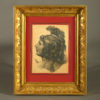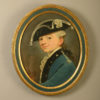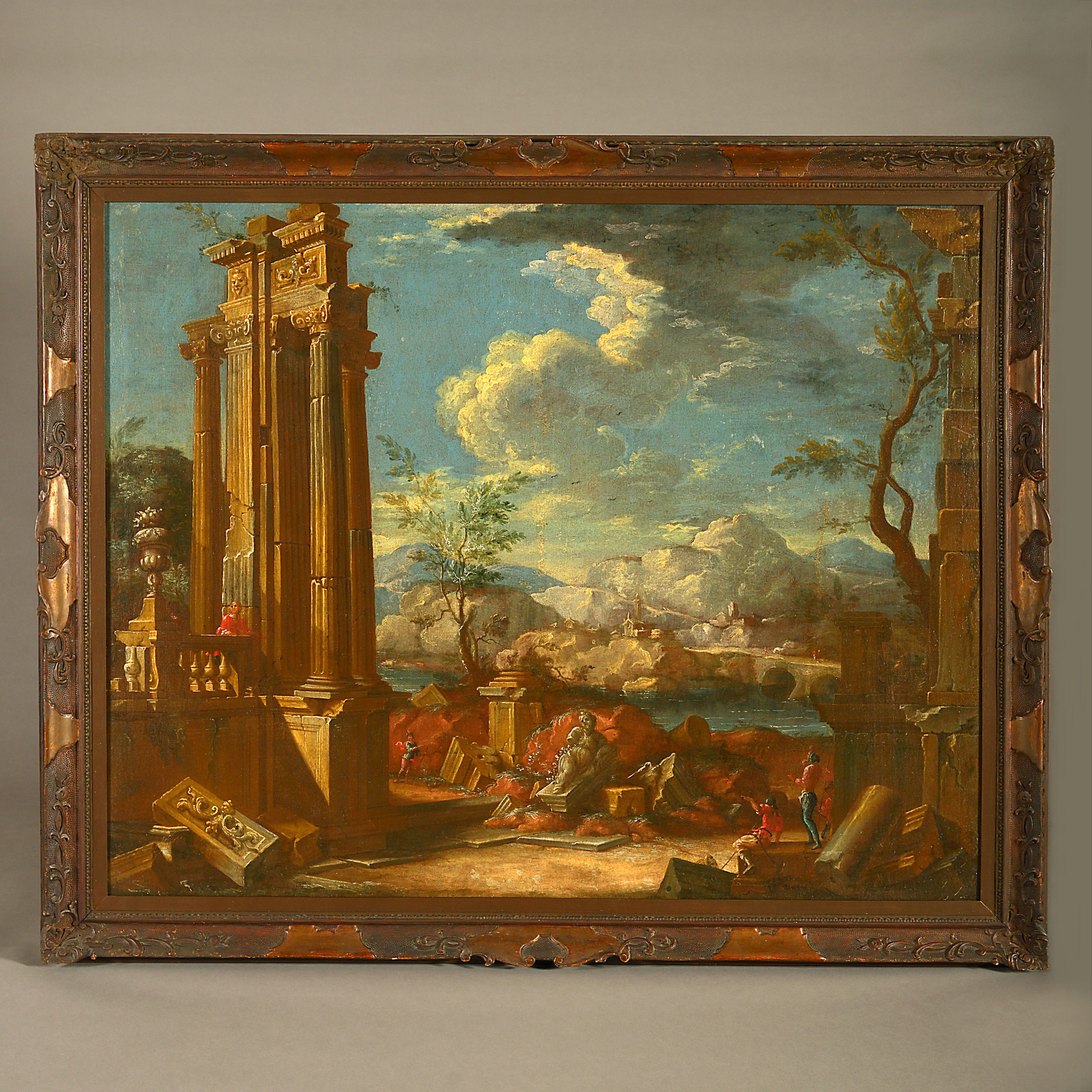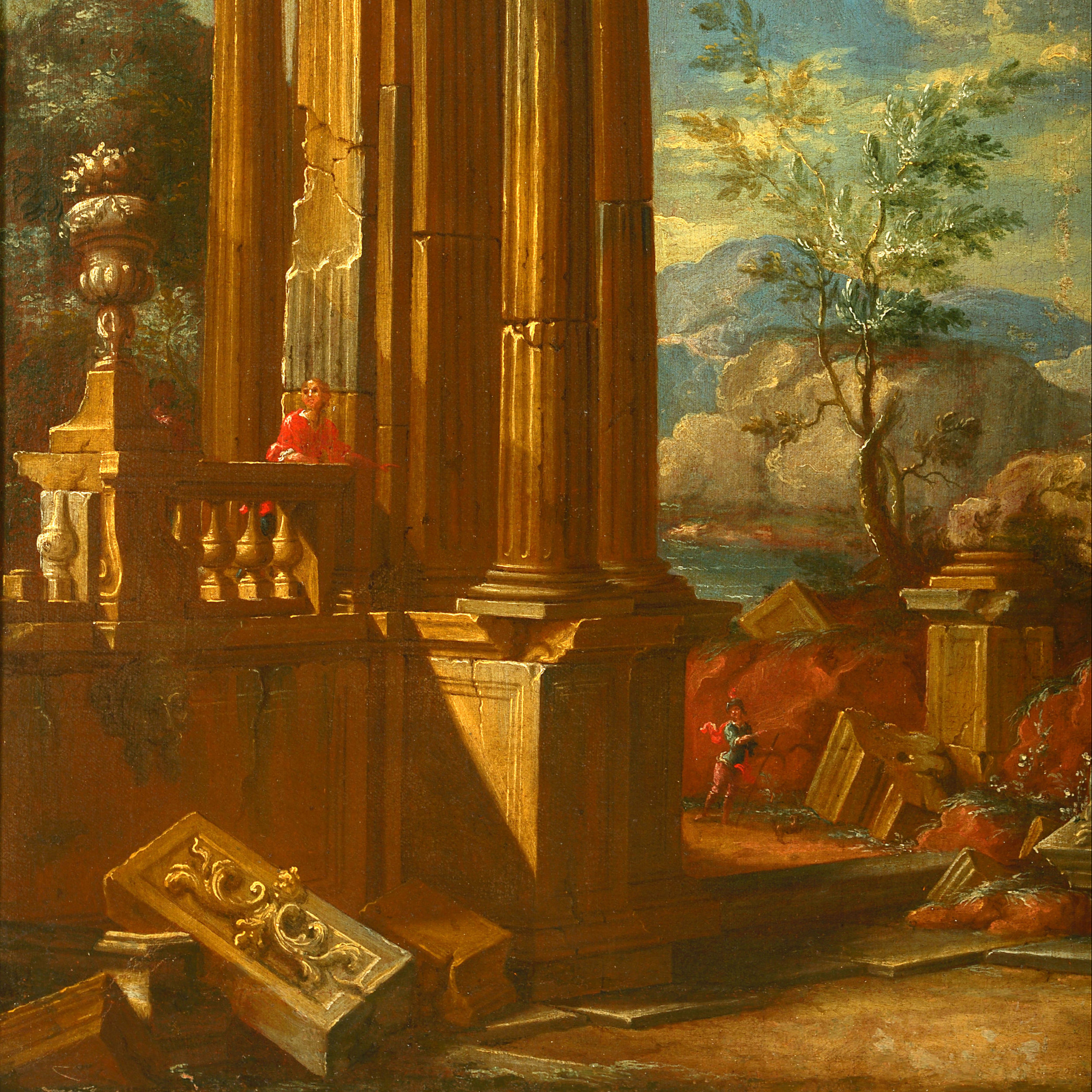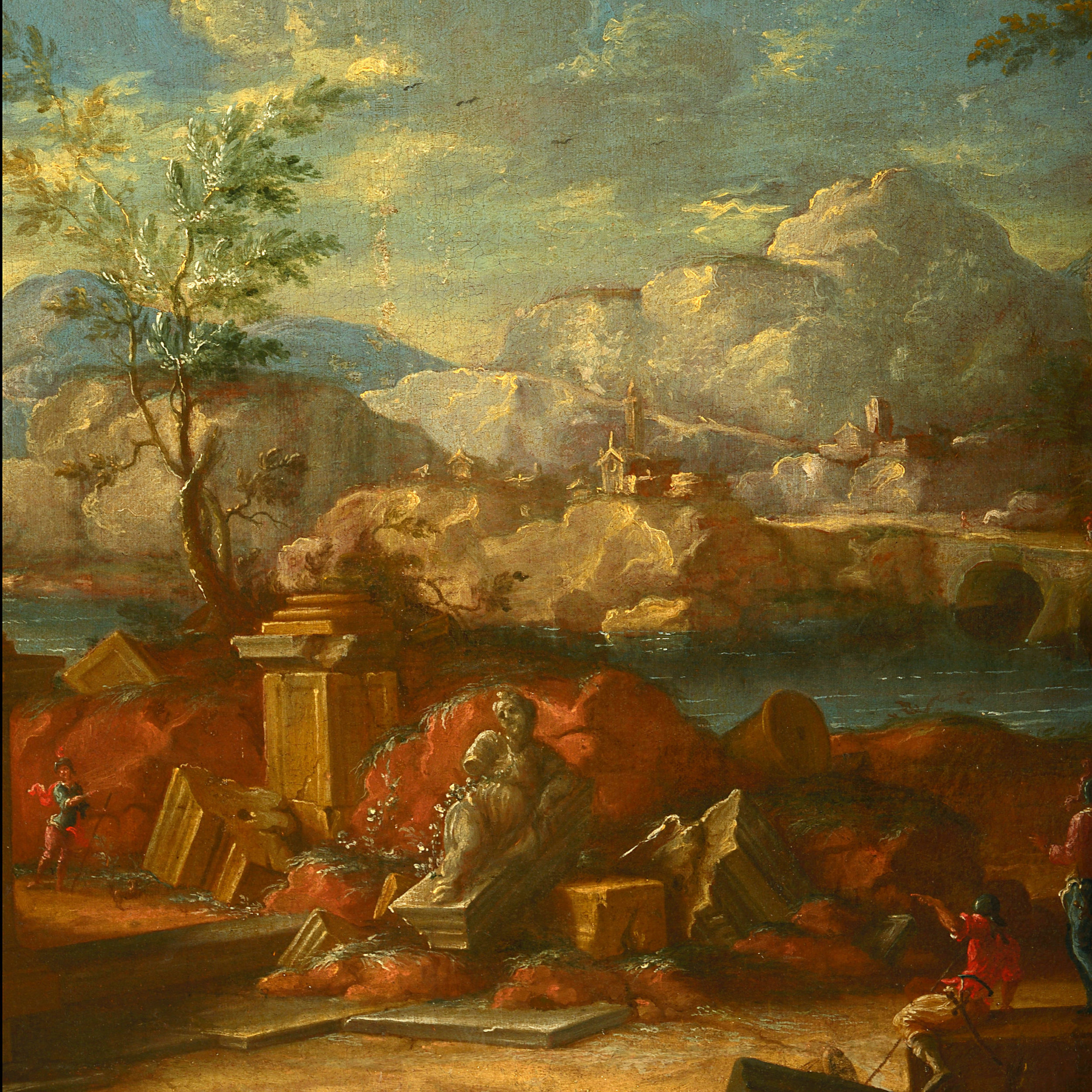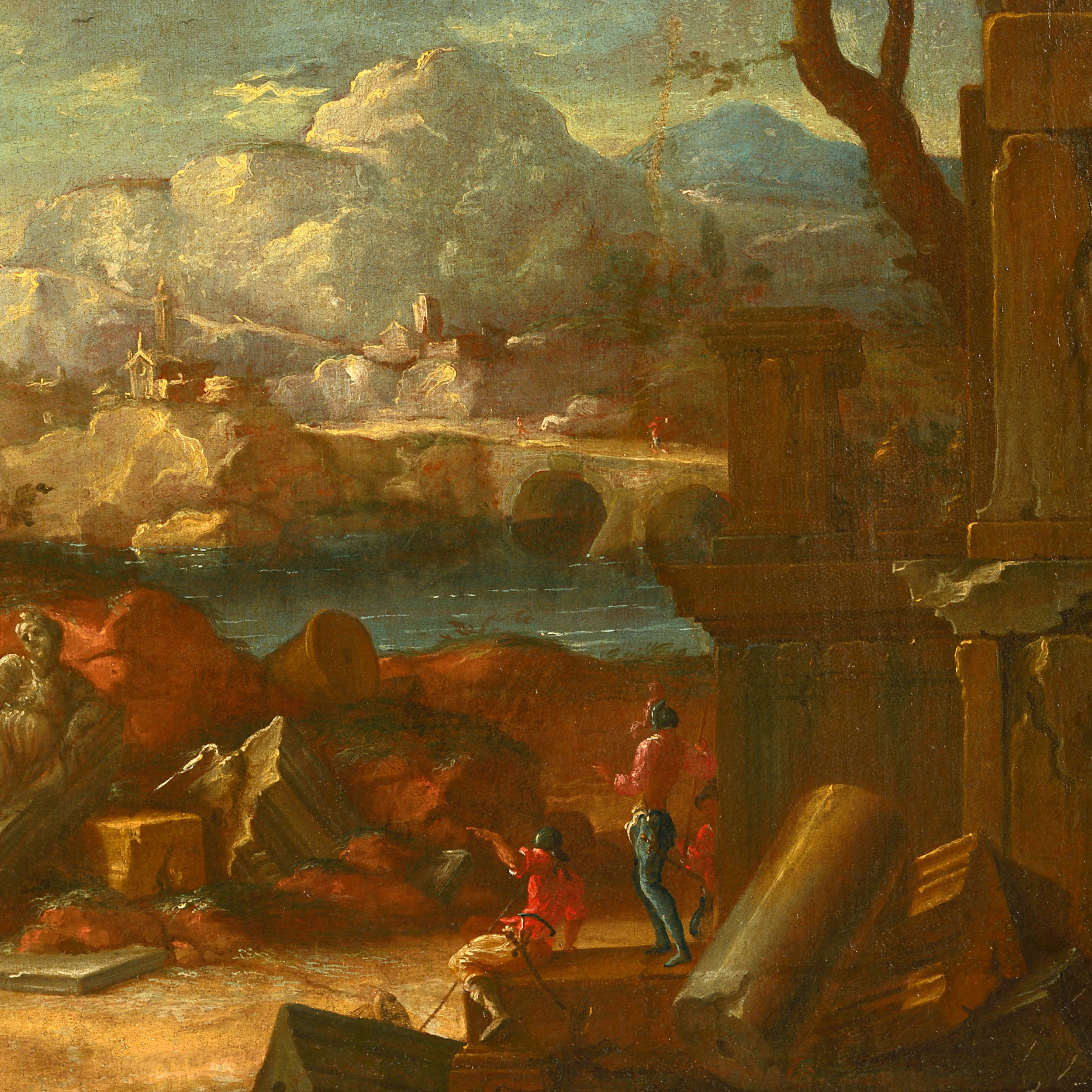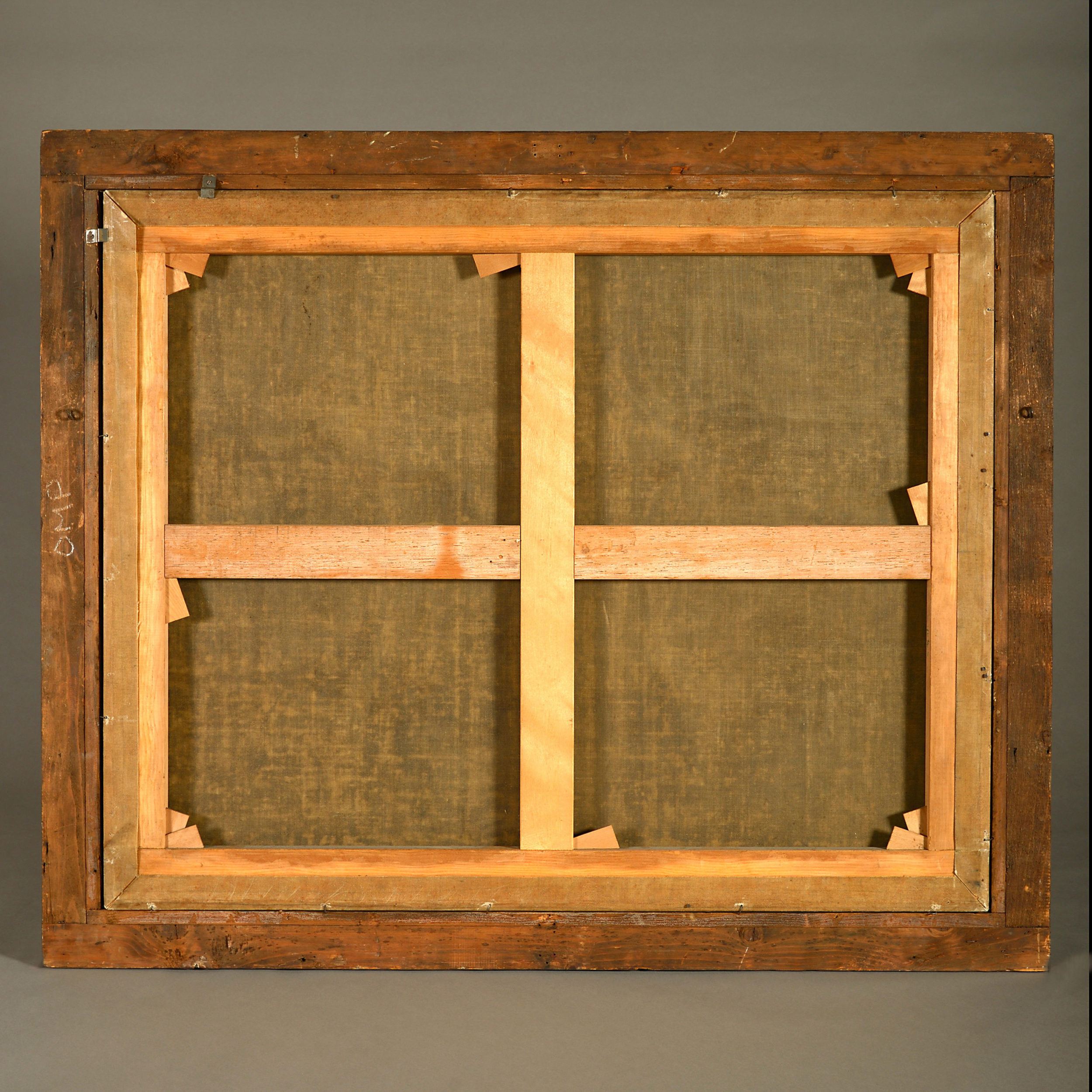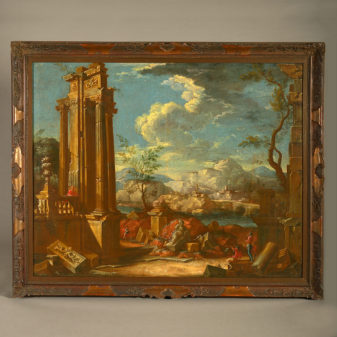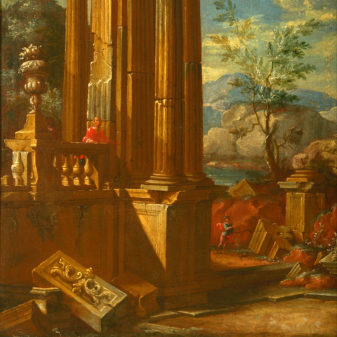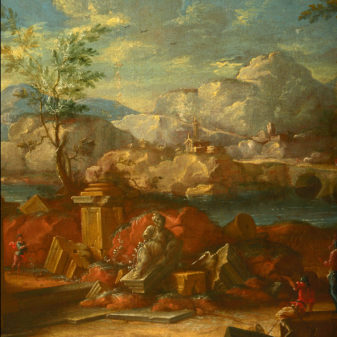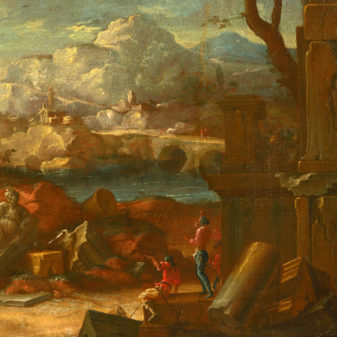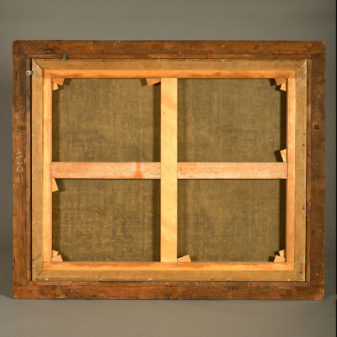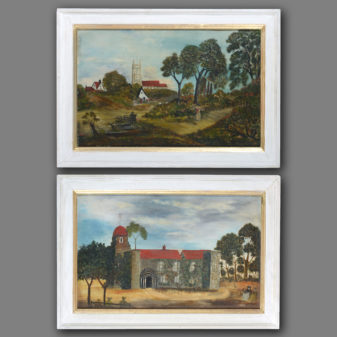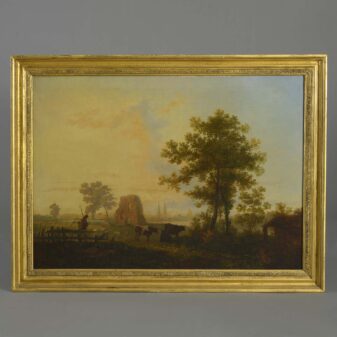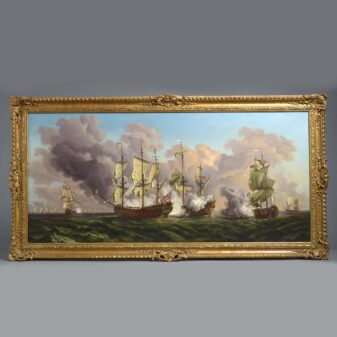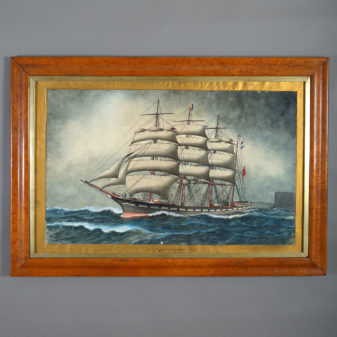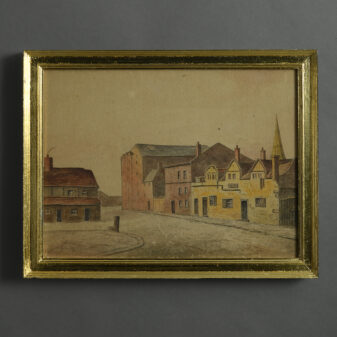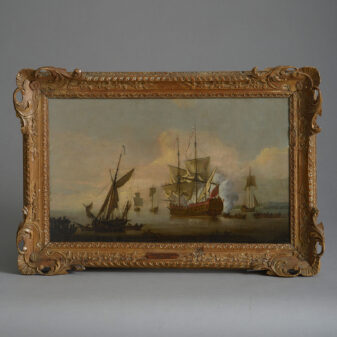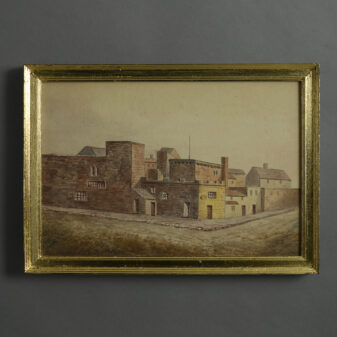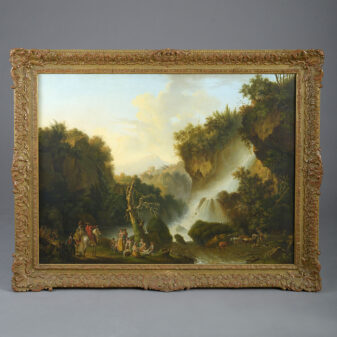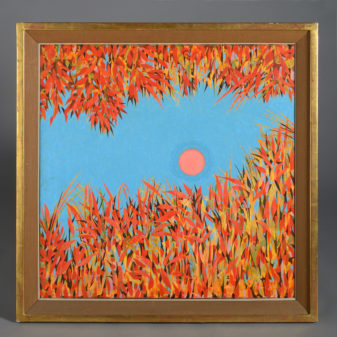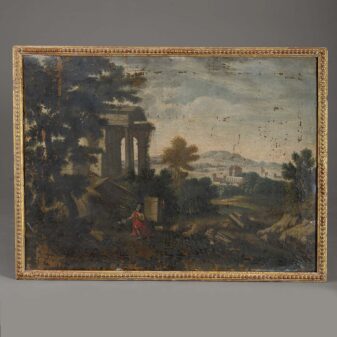An Early 18th Century Capriccio Landscape
£9,500
Circa 1720 Italy
Height 47 inches (119.38 cm)
Width 57 inches (144.78 cm)
Depth 3 inches (7.62 cm)
Manner of Marco Ricci (1676-1730)
A large scale capriccio, depicting classical ruins with figures.
Oil on canvas, set within a gilded frame.
This landscape bares close resemblance to the work of Marco Ricci who was born in Belluno in 1676. Ricci received his artistic training from his uncle, Sebastiano Ricci. In 1796 he was forced to flee from Venice following a brawl which resulted in the death of a Gondolier. He fled to Dalmatia which was then a republic of Venice, where he stayed for some time painting perspective landscapes. In 1706 he worked with his uncle for a year on the decoration of the Sala d’Ercole in the Palazzo Fenzi in Florence. He then furthered his study by spending some time in the Netherlands painting Dutch landscapes.
The Ambassador to Venice, Charles Montagu 4th Earl of Manchester, further influenced his journey by encouraging Ricci to travel to London. Marco Ricci spent the following two years painting opera scenery and private homes with Pellegrini including Burlington House in Piccadilly, now the home of the Royal Academy. In 1716 Ricci returned to Venice to live with his uncle and collaborated on larger works of art whilst producing a prodigious amount of his own work. He was also one of the first etchers of 18th century Venice. His style of combining the simplicity of Flemish and Dutch art with the fantasies of the Baroque stage became an international success.
Ricci painted half of his works oil on canvas but his smaller pieces are tempera on goatskin. His works fall into four categories; villages or courtyards, alpine views, violent storms and ruins.
His influencers included Claude Lorrain, Gaspard Dughet and Salvator Rosa. Among his pupils were Domenico and Guiseppe Valariani. Marco Ricci died in Venice in 1730.
This painting clearly shows a strong influence of the Ricci school in its composition, subject elements and its overall baroque exuberance.

